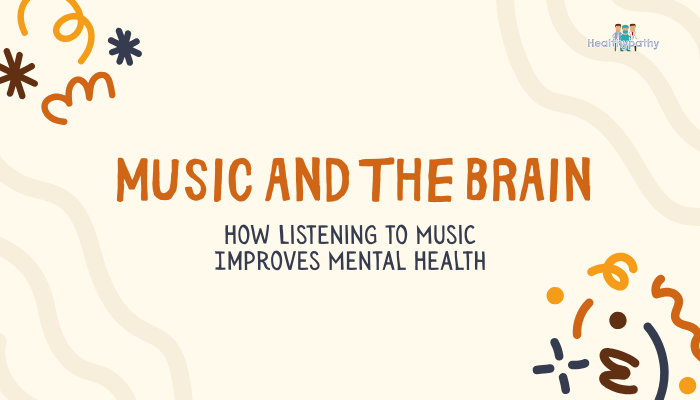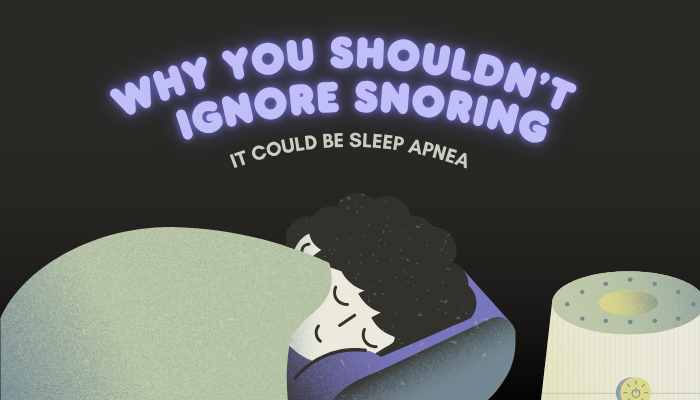Introduction
Menstrual cycle syncing, also known as “period syncing,” is the idea that women who spend extended time together may experience a gradual alignment of their menstrual cycles. Many individuals share anecdotes of roommates, close friends, or teammates finding their periods overlapping after living or working together. These personal experiences have sparked popular interest and debate about whether cycle syncing is real or coincidental.
Some attribute potential syncing to pheromones or the subtle influences humans exert on one another’s hormones. Others argue that the phenomenon is an illusion rooted in chance and selective attention. Women’s cycles vary in length, intensity, and symptoms, making patterns difficult to evaluate. Over the past few decades, several studies have attempted to measure the likelihood of synchronized cycles, with inconclusive results.
This article explores the origins of the menstrual cycle syncing theory, the scientific controversies surrounding it, the possible biological and psychological factors that could promote or undermine it, and the ways modern women track cycles. It also addresses misconceptions that have arisen through media coverage and cultural narratives. Understanding these discussions can empower readers to discern fact from myth while gaining practical insight into menstrual health.
What Is the Menstrual Cycle?
The menstrual cycle encompasses the monthly hormonal and physiological changes the female body undergoes to prepare for a possible pregnancy. The average cycle is about 28 days, though it can vary from around 21 to 35 days in healthy individuals. Despite the variability, each cycle follows a general pattern of hormonal fluctuations that influence ovulation and menstruation.
Key Phases of the Cycle
- Menstrual Phase: The uterine lining sheds, leading to menstrual flow. This phase typically lasts from three to seven days.
- Follicular Phase: The pituitary gland secretes follicle-stimulating hormone (FSH), prompting ovarian follicles to develop. Estrogen rises, thickening the uterine lining.
- Ovulation: Usually occurring around the midpoint of the cycle, luteinizing hormone (LH) surges, causing a mature follicle to release an egg.
- Luteal Phase: After ovulation, the ovarian follicle transforms into the corpus luteum, secreting progesterone to maintain the uterine lining. If fertilization does not occur, hormone levels drop, signaling the onset of menstruation, and the cycle restarts.
Women can experience physical and emotional changes linked to these hormonal shifts, including mood swings, breast tenderness, or changes in energy levels. These fluctuations affect each person differently. Even in healthy women, the exact timing of each phase can shift from cycle to cycle based on stress, illness, and other variables.
Understanding the Concept of Cycle Syncing
Cycle syncing refers to the belief that women living in close quarters or spending significant time together develop periods that coincide or become close in timing. Common examples include women in dormitories, sisters in the same household, or members of sports teams.
Popular media has covered cycle syncing as if it is a well-established phenomenon, often pointing to anecdotal stories of best friends who “always end up with their periods at the same time.” While these shared experiences can be compelling, the actual research behind menstrual cycle convergence has produced mixed results.
Historical Context
Before scientific studies examined the hypothesis, many cultural narratives suggested that groups of women might align their cycles. Some communities even believed that synchronized cycles were a communal or spiritual experience. It was often accepted as fact rather than speculation.
The conversation entered the scientific domain in the 1970s with a notable study that elevated the concept of menstrual synchrony, fueling further debate among researchers and the public.
The McClintock Study and Its Influence
In 1971, a researcher published a paper that propelled the concept of menstrual cycle syncing into scientific and popular discussions. This study examined a group of women living in a university dormitory to see if their cycles became more aligned over time.
Study Overview
- Participants: The study involved close to 135 college women living in the same dormitory.
- Design: Over several months, the researcher documented the women’s period start dates.
- Findings: The study concluded that the onset of menstruation among roommates and close friends shifted so that their cycles overlapped more often than chance would predict.
The researcher attributed these results to the presence of female pheromones, suggesting that chemical signals might influence cycle timing. This explanation was groundbreaking, as it implied that the human body could produce and respond to invisible cues from others in its environment.
Reception and Criticism
Although the study generated excitement, subsequent research was inconsistent. While some studies suggested that certain friend groups displayed partial synchronization, others found no evidence of meaningful alignment. Critiques involved:
- Small sample sizes.
- Statistical biases.
- Possible oversight of confounding variables like random chance.
Nevertheless, the McClintock study remained a cornerstone in the conversation around menstrual synchrony. It raised the question of whether pheromones or other factors might cause the alignment of cycles among close acquaintances.
Why the Research Is Controversial
Investigations into menstrual synchrony have produced contradictory findings. Some researchers see evidence of mild alignment, while others attribute observed overlaps to statistical coincidence. Complexities in study design and the many variables influencing cycle length make definitive conclusions challenging.
Variables That Complicate Findings
- Natural Variations in Cycle Length: Two women can each have cycles ranging from 21 to 35 days. Across months, these durations can shift.
- Random Overlaps: Even if each person’s cycle is random, there will be times when periods coincide and times when they do not.
- Recall Bias: Studies relying on self-reported dates may be vulnerable to memory errors.
- Small Participant Samples: Larger groups have more robust data, while smaller groups can exaggerate or obscure trends.
- Lifestyle Factors: Stress, diet, travel, medications, and hormonal contraceptives can alter cycles significantly.
Researchers point out that chance alone can occasionally produce overlaps in menstrual start dates, leading to the impression of synchrony when none exists. Statistical analysis needs to account for random alignment to ensure that observed patterns exceed what would happen by coincidence.
Hormones and Potential Biological Mechanisms
The possibility of cycle syncing hinges on whether there is a biological trigger that can shift one individual’s hormonal timeline to match another’s. Proponents often reference pheromones—chemical signals secreted by one person that produce physiological or behavioral changes in someone else.
The Role of Pheromones
- Olfactory Influence: In animals, pheromones are known to induce changes in mating behaviors or fertility. Some believe humans might have a vestigial form of this system.
- Unclear Evidence in Humans: While there are known examples of pheromones in insects and mammals, conclusive proof in humans remains elusive.
- Possible Social Impact: If humans do produce and detect pheromones, the effect may be weak or overshadowed by other variables such as social routines and personal stressors.
Other Potential Biological Factors
- Hypothalamic Regulation: The hypothalamus in the brain regulates hormone release. If chemicals in the environment signal the hypothalamus, it could theoretically modify cycle timing.
- Stress Hormones: Cortisol, the stress hormone, can disrupt normal cycles. If two people share stressful events, it might affect their cycles similarly but not necessarily synchronize them.
Despite these theoretical mechanisms, the research lacks a definitive biological explanation that fully supports the menstrual synchrony hypothesis.
Social Factors Influencing Perceptions of Synchrony
Whether cycle syncing is real or not, many people remain convinced that their periods align. Social and psychological forces may create or reinforce this belief.
Selective Attention
- Individuals might pay closer attention when periods overlap but fail to notice when they do not.
- Friends could interpret any short overlap in cycles as confirmation of syncing, ignoring other months of misalignment.
Confirmation Bias
- People may remember events that support the notion of syncing and forget those that do not.
- Cultural narratives that encourage believing in period alignment can amplify these patterns.
Shared Living Patterns
- Individuals who share meals, schedules, and daily routines might experience similar stress or dietary changes that indirectly affect their cycles.
- Overlapping lifestyles can increase the likelihood of incidental alignment, leading to a stronger belief in synchrony.
Cultural Myths and Narratives
Various societies throughout history have attached beliefs and customs to menstrual cycles. Some cultures perceived menstruation as a collective experience or used it in rituals. These traditions may contribute to the persistence of menstrual syncing myths.
Communal Menstruation in Ancient Tales
- Some historical texts suggest groups of women living in specific communal structures may have had synchronized cycles.
- These stories are often anecdotal with no systematic data.
Modern Media and Pop Culture
- Television shows and blogs popularize personal stories of women “syncing up” in workplaces or dorm rooms.
- Magazines and online articles sometimes present cycle syncing as accepted fact, reinforcing the idea even when lacking evidence.
These cultural narratives shape public perception, leading many to accept cycle syncing without examining the scientific controversy.
Modern Research Findings
Recent studies with refined methodologies have attempted to replicate or refute the original findings. Some use digital apps that allow participants to log menstrual data in real time, offering a potentially more reliable dataset than memory-based methods.
Digital Menstrual Tracking Studies
Researchers analyzing data from popular period-tracking apps have found:
- Large sample sizes of women logging start and end dates.
- Results showing no significant tendencies toward synchronized cycles among friends or family members, suggesting that alignment was consistent with random chance.
Contrasting Results
- A handful of smaller studies found partial evidence of weak synchrony, though not consistently across all participants.
- Many published papers highlight the need for more controlled, longer-term research that excludes other factors such as hormonal contraception or underlying health conditions.
The majority viewpoint in modern scientific discourse leans toward the position that broad cycle synchrony does not occur beyond what random chance would predict.
Confounding Factors in Observational Studies
Analyzing menstrual cycle alignment is complex due to the many factors that can disrupt or alter timing. Failing to account for these can lead researchers to draw inaccurate conclusions.
Hormonal Birth Control
- Oral contraceptives, intrauterine devices with hormones, patches, or injections can regulate bleeding in a way that mimics but does not necessarily reflect natural menstruation.
- Different forms of contraception can mask or reduce the normal fluctuations seen in a natural cycle, skewing study outcomes.
Health Conditions
- Thyroid problems, polycystic ovary syndrome (PCOS), and other hormonal disorders can cause irregular bleeding or unexpected shifts in cycle length.
- Women with irregular cycles might appear to synchronize or desynchronize at random.
Life Events
- Traveling across time zones, sleep disruptions, dieting, or extreme exercise can shift ovulation and menstruation onset.
- Emotional or psychological stress may delay ovulation, influencing how a person’s cycle lines up in a given month.
The Role of Pheromones Revisited
Human pheromones remain a subject of debate in the scientific community. While evidence exists for pheromonal influence in animal species, the same is less conclusive in humans. Some experiments hint at possible chemical signals that alter mood or physiology, yet they are not definitive.
Experimental Attempts
- Sweat Sample Studies: Researchers have attempted transferring sweat from one participant to another to see if it shifts menstrual timing. Early works claimed minimal changes, but these results have not been consistently replicated.
- Challenges in Detection: Identifying human pheromones is difficult because people produce many odors. Distinguishing one potential pheromone from other chemical compounds poses technical barriers.
The question of whether human pheromones can synchronize menstrual cycles remains open, but the current consensus tilts toward skepticism without stronger evidence.
Psychological and Emotional Influences
The mind-body connection plays a significant role in menstrual health. While psychological factors may not directly cause cycle syncing, they can influence how individuals perceive their experiences.
Stress and Cycle Fluctuations
- Chronic stress disrupts the hypothalamic-pituitary-gonadal axis, leading to delayed or missed ovulation.
- Friends experiencing a shared stressful period (exams, project deadlines) could inadvertently have shifts in their cycles.
Emotional Bonding
- Women who feel emotionally close might discuss menstrual symptoms or track them together.
- Being hyperaware of each other’s cycles could yield a belief in syncing that arises from selective observation.
Social Support
- Sharing menstrual experiences can foster empathy and bonding, which might reinforce the idea of synchronization, even if the actual data does not confirm it.
Environment, Daily Routines, and Menstrual Timing
Though large-scale synchrony might be rare, living or working together can still affect aspects of health and well-being that indirectly shape menstruation. Common environments can influence meal patterns, activity levels, or exposure to light, all of which can shift hormonal rhythms.
Eating Habits
- Diet composition, meal timing, and nutrient intake can alter metabolic hormones like insulin, potentially impacting the menstrual cycle.
- Women sharing a household might adopt similar diets or eating schedules.
Light Exposure
- The menstrual cycle may have mild sensitivity to light variations. Consistent schedules or identical bedtime routines can contribute to small shifts in hormonal release.
Physical Activity
- Exercise levels and workout routines can alter body composition and stress hormones.
- Roommates or friends who go to the gym together may experience some overlap in how stress or exertion affects their cycles.
These collective lifestyle factors may cause subtle similarities in cycle timing, giving the impression of syncing.
How to Track Your Cycle
Many women use cycle-tracking tools to monitor their fertility windows and anticipate symptoms. This data can also clarify whether any sync-like patterns are random or recurring.
Methods of Tracking
- Mobile Apps: Enter dates of menstrual start and end, track symptoms, and sometimes measure basal body temperature.
- Manual Calendars: Mark down the start day of menstruation each month.
- Basal Body Temperature (BBT) Tracking: Taking BBT daily can help identify ovulation by detecting a small temperature rise in the luteal phase.
- Ovulation Predictor Kits (OPKs): These kits measure LH levels in urine to signal impending ovulation.
Tracking data over several months offers a clear record of cycle regularity or irregularity. This can help detect patterns and confirm whether any overlap with a friend’s cycle is consistent or coincidental.
Health and Well-Being: Why It Matters
Regardless of whether period syncing is factual, focusing on menstrual health remains significant. Monitoring the menstrual cycle can reveal insights about hormonal balance, stress levels, and overall physical health.
Early Detection of Abnormalities
- Sudden changes in cycle length can indicate thyroid disorders, PCOS, pregnancy, or other hormonal issues.
- Consistent tracking can help identify irregular patterns that warrant medical evaluation.
Symptom Management
- Awareness of cyclical changes can help anticipate mood shifts, cramps, or migraines.
- Planned self-care, like extra rest or specific dietary choices, can alleviate symptoms during challenging phases.
Fertility Considerations
- Those aiming to conceive often use cycle-tracking methods to identify ovulation windows.
- Recognizing irregularities can guide timely consultations with healthcare providers.
Understanding one’s cycle fosters a proactive approach to health, regardless of whether any friend’s cycle appears to line up with one’s own.
Conclusion
The intriguing concept of menstrual cycle syncing has roots in anecdotal stories and early research suggesting that close-knit women might align their periods through hormonal or pheromonal signals. Over time, follow-up studies have presented mixed findings, with many concluding that perceived synchronization often falls within the boundaries of statistical chance. Social factors, selective attention, cultural myths, and anecdotal accounts can perpetuate the idea that syncing is common.
While many women remain convinced of its reality due to personal experiences, most current scientific evidence leans toward skepticism. Biological mechanisms such as human pheromones remain insufficiently proven in this context. Chance overlaps are bound to arise among friends who track their cycles, adding to the belief in syncing.
Regardless of the syncing debate, the process of understanding and tracking one’s menstrual cycle is beneficial for health awareness. By recognizing normal variations, monitoring symptoms, and consulting healthcare providers when abnormalities arise, individuals can better manage their well-being. Whether or not periods align with friends, staying informed about the menstrual cycle can promote healthier habits, reduce stress, and nurture a deeper connection with the body’s rhythms.
References
- McClintock MK. Menstrual synchrony and suppression. Nature. 1971;229(5282):244–245.
- Wilson HC. A critical review of menstrual synchrony research. Psychoneuroendocrinology. 1992;17(6):565–591.
- Strassmann BI. The rarity of menstrual synchrony. Ethol Sociobiol. 1999;20(5):337–343.
- Weller L, Weller A. Menstrual synchrony under optimal conditions: Bedouin families. J Comp Psychol. 1993;107(2):161–166.
- Ziomkiewicz A, Pawłowski B, Spisak J, et al. Menstrual synchrony: Fact or artifact? Hum Nat. 2012;23(2):248–266.
- McClintock MK, Stern K. The role of pheromones in human menstrual synchrony. In: Wallen K, Schneider JE, editors. Reproduction in Context. MIT Press; 2000:315–330.
- Yang Z, Schank JC. Women do not synchronize their menstrual cycles. Hum Nat. 2006;17(4):433–447.
- Schank JC. Do human menstrual-cycle pheromones exist? Hum Nat. 2001;12(4):433–452.
- Bentley GR, Goldberg T, Jasienska G. The fertility of agricultural and non-agricultural societies. Popul Ecol. 1993;35(2):121–147.
- Arévalo M, Jennings V, Nikula M, Sinai I. Efficacy of the new TwoDay Method of family planning. Fertil Steril. 2004;82(4):885–892.
- Schmalenberger KM, Tauseef HA, Barone JC, Owens SA, Lieberman L, Dorn LD. The link between mental health, daily stress, and the menstrual cycle. J Womens Health (Larchmt). 2021;30(1):23–29.
- Pillsworth EG, Haselton MG, Buss DM. Ovulatory shifts in female sexual desire. J Sex Res. 2004;41(1):55–65.







